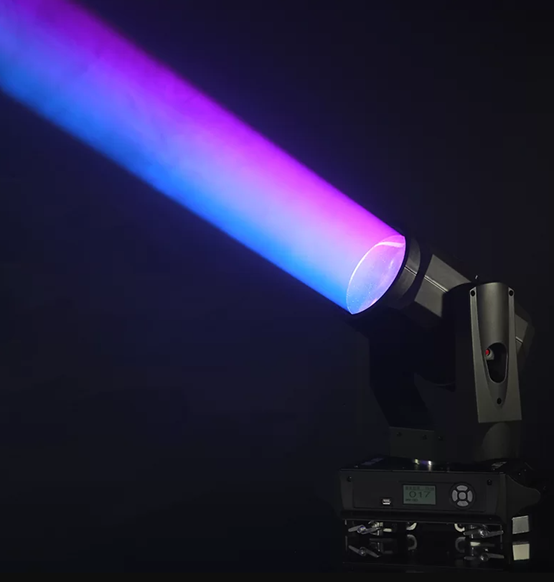Are LED Stage Lights Eye-Safe? How to Minimize Eye Glare?
LED stage lights have revolutionized lighting with their energy efficiency and versatility, but their intense brightness raises concerns about eye safety. In this blog, we will explore the reasons for LED light glare and how to minimize the discomfort.
What are RGB Lights, RGBW Lights in LED Stage Lights?
RGB Lights in LED stage lighting use three primary colors—Red, Green, and Blue—to create a wide range of colors through additive color mixing. By adjusting the intensity of each of these three colors, RGB lights can produce millions of different hues and shades, making them a popular choice for dynamic and colorful stage effects.
RGBW Lights build on the RGB system by adding a dedicated White (W) LED chip. This addition allows RGBW lights to produce not only the full spectrum of colors available with RGB, but also pure, true white light and a broader range of pastel shades and color effects. The dedicated white chip results in brighter, more consistent white illumination and improved color rendering, which is especially important for applications where both vibrant colors and high-quality white light are needed, such as stage lighting and illuminated signage.
Are LED Stage Lights Eye-Safe?
Under normal operating conditions, most LED stage lights comply with international photobiological safety standards (such as IEC/EN 62471), which classify them as low-risk for brief exposure. The human eye’s natural aversion responses—blinking, squinting, or looking away—typically prevent acute damage from accidental exposure.
However, improper use (e.g., prolonged direct exposure or excessive intensity) can lead to discomfort and potential risks.
Blue Light & Retinal Stress
LEDs with a strong blue spectral peak (400–495 nm) have raised concerns due to studies linking prolonged high-energy blue light exposure to retinal stress and circadian disruption.
While there is no conclusive evidence that standard stage LEDs cause permanent damage, minimizing unnecessary exposure is advisable, especially for performers under frequent lighting.

Source: https://sg.msi.com/blog/blue-light-and-its-impact-on-eye-health
Glare & Visual Fatigue
The primary issue with LED stage lights is glare-induced discomfort, leading to eye strain, headaches, and temporary vision disturbances.
Poorly diffused or misaligned beams exacerbate this effect, particularly in dark-adapted environments.
Flicker & Strobe Effects
Low-quality or improperly driven LEDs may produce flicker, which can contribute to visual fatigue, migraines, or photosensitive reactions in susceptible individuals.
Strobe lighting should be used sparingly and with audience warnings when applicable.
UV & Specialty Lighting Risks
UV-emitting LEDs (used in blacklight effects) require caution, as even brief direct exposure can harm the cornea and retina. Proper protective measures, such as UV-blocking filters or goggles, are essential.
How to Reduce Eye Glare in LED Stage Lighting?
Glare occurs when excessive or misdirected light causes discomfort, distraction, or reduced visibility for performers and spectators. It can lead to eye strain and make it difficult to see facial expressions or stage details. Common causes of glare include overly bright fixtures, improper beam angles, and lack of diffusion or shielding.
Minimizing eye glare from LED stage lighting is essential for visual comfort, safety, and optimal performance. Here are effective strategies supported by expert sources:
Optimize Beam Angles
Direct photons away from the audience’s line of sight using a narrower field lens or beam-shaping attachment. For that purpose, calculate the throw distance, uniform field coverage, and reflection angles to lower stray luminance hotspots.

Use Diffusers and Anti-Glare Shields
Incorporate micro-lens diffusers or honeycomb grids to scatter high-intensity beams. It decreases direct radiance levels on retinas without losing photometric accuracy or color mixing efficiency.
Balance Lighting Levels
Monitor local lux ratios with sophisticated metering tools and calibrate each fixture’s output. Remember, uniform brightness across the stage averts ocular fatigue and curtails abrupt visual transitions that amplify glare.
Choose the Right Color Temperatures
Mix cool white with subtle warm components or layered RGB sources to stabilize perceived brightness. Hence, it lessens rapid pupil oscillation and guarantees consistent contrast between illuminated zones.
Smart Lighting Controls
Implement DMX-based or networked dimming systems that respond to instantaneous cues. An adaptive LED stage light can modulate power levels immediately and uphold the finest lumen output for each scene.
Light Sky Lighting – Smart, Safe, and Spectacular Illumination
LED stage lighting offers incredible versatility and energy efficiency, but without proper glare control, it can lead to eye strain, discomfort, and reduced performance quality. By optimizing fixture placement, using anti-glare accessories, adjusting intensity, and minimizing flicker, you can create visually stunning productions that prioritize both aesthetics and eye safety.
For high-quality, eye-friendly LED stage lighting solutions, consider Light Sky. Our advanced fixtures feature precision optics, flicker-free technology, and customizable diffusion options, ensuring brilliant illumination without harsh glare. Whether for concerts, theaters, or live events, Light Sky’s professional-grade lighting helps you achieve the perfect balance of impact and visual comfort.










